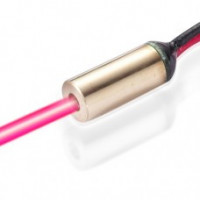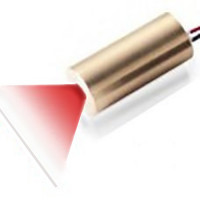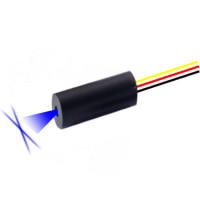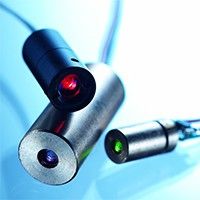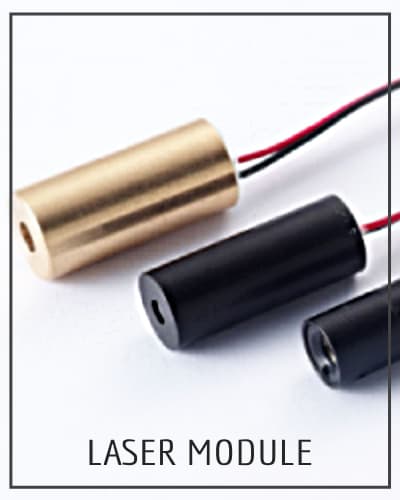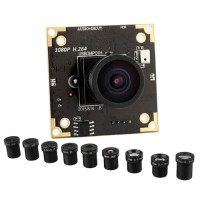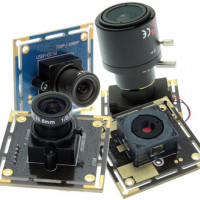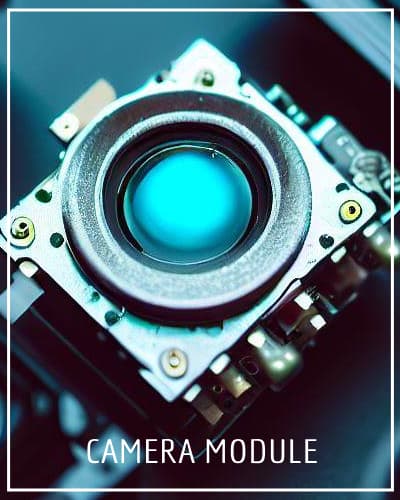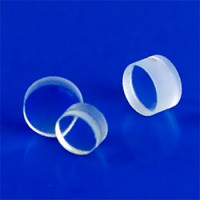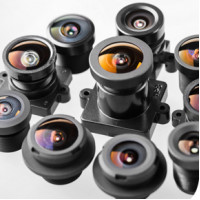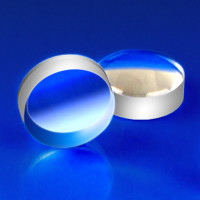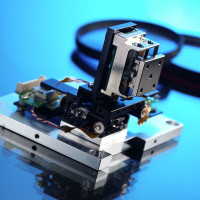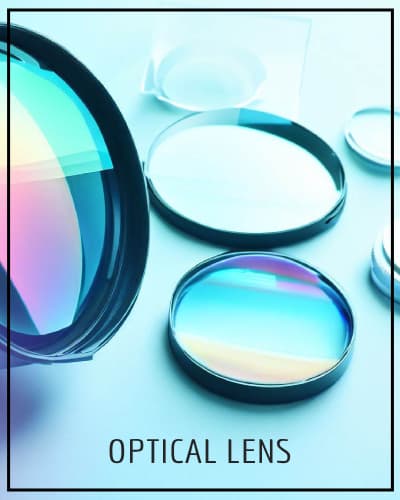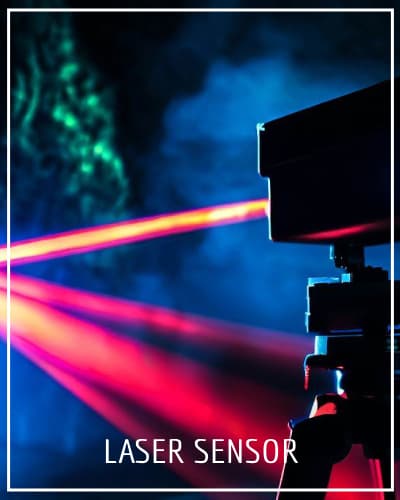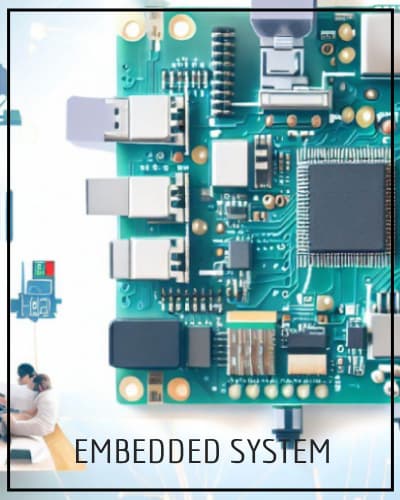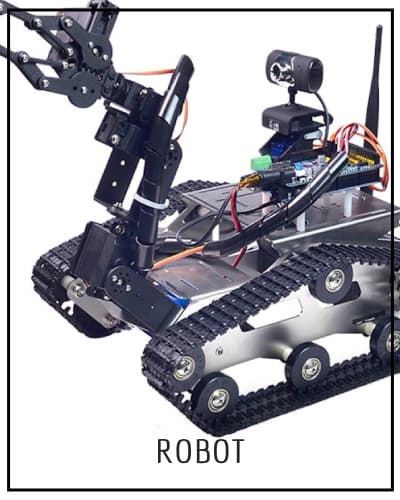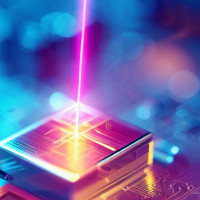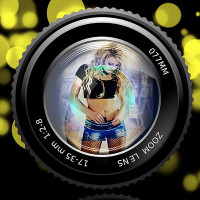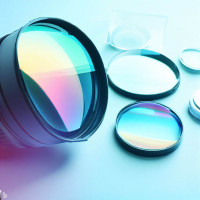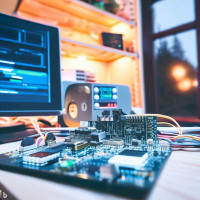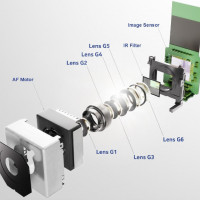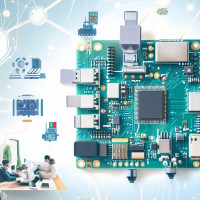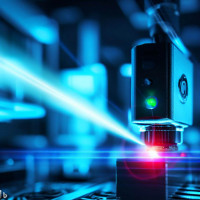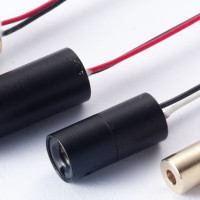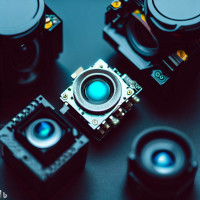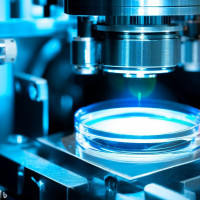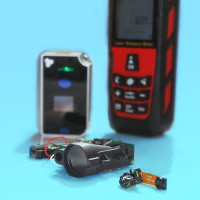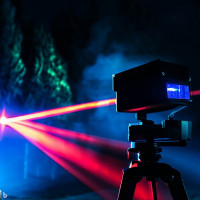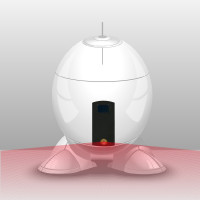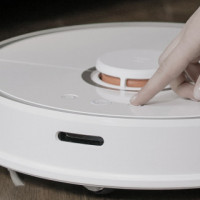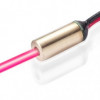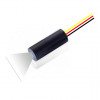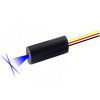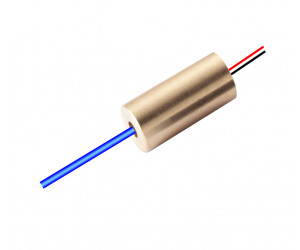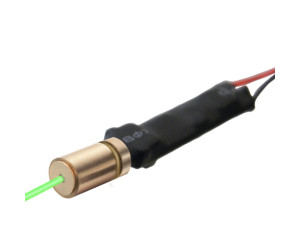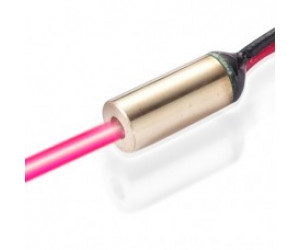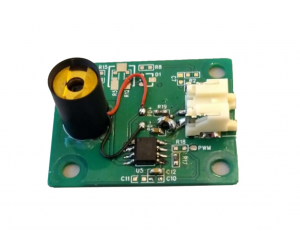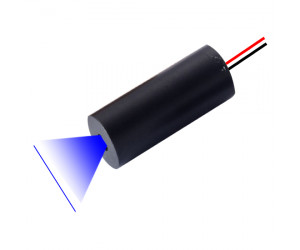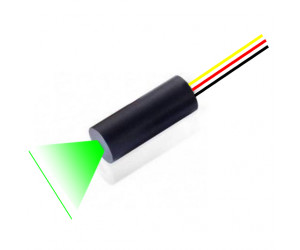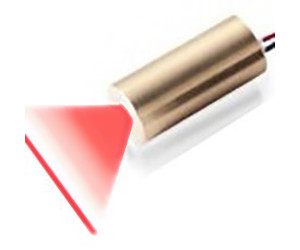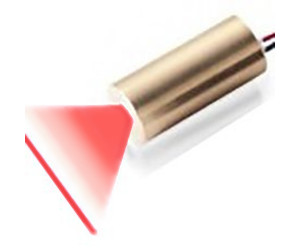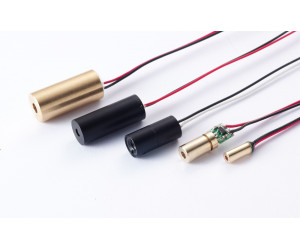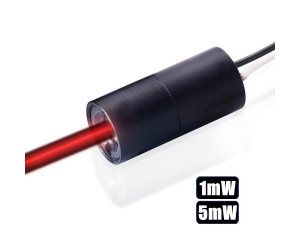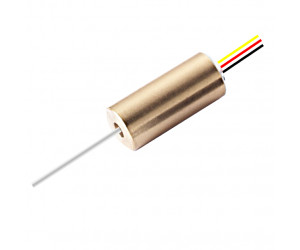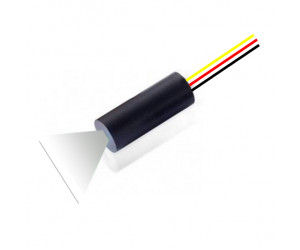Laser Module, Diode Laser Module Naming Rule: RGB Laser Diode Module, IR Laser Module, Line Laser Module
| Product Code | Laser Module Dia. | Color, λ(nm) | Model | Laser Power | Laser Pattern |
| LM: | 4: 4mm | B: Blue, 405:405nm | S: Standard | <0.39mW, Class I | D: Dot, R: Round |
| Laser Module | 6: 6mm | G: Green, 520:520nm | H: High-End | 1:<1mW, Class II | L: Line, C: Cross Line |
| 8: 8mm | R: Red, 635:635nm | C: Custom Made | 10:<10mW | P: Pattern | |
| 9: 9mm | IR: Infrared, 940:940nm | 1000:1000mW |
As an accountable laser supplier, we fully understand the requirements of Laser Module & Laser Sensor evaluation such as RGB laser modules, laser line module, IR laser module, laser sensor, and uniform line laser modules. While integrating laser modules into users' projects, some customization requests could be raised. IADIY expertise team specializes in providing solutions and will make sure proposals are production worthy.
RGB Laser Module, Diode Laser Module: Visible laser diode module wavelength options : 405nm, 450nm, 520nm, 635nm, and 650nm.
IR Laser Module, Infrared Laser Module: Infrared laser modules, also known as IR laser modules across 780nm to 980nm.
Laser Line Module, Laser Line Generator: Laser line modules cover RGB line laser module, infrared laser line modules as well as uniform line laser module (prepared by Powell Lens).
Other Laser Module and DOE Laser Pattern Module: Besides of listed standard laser modules, we also have VCSEL laser diode module, DOE laser-pattern module, custom laser modules. Visit our Custom Laser Module page to review available customization options. If you need any further support, do not hesitate to contact us.
TTL Laser Modulation: Laser integration isn't a trivial job for all projects. Flexibility of tunable laser can help developer's work easier. TTL circuit, core technology of tunable laser, allows users to modify laser output power by altering PWM duty ratio from 10% to 100%. Laser TTL control features are available for both standard laser modules and customization.
Laser Safety: Before entering US or EU, all products are required to apply for FDA accession number or CE as long as laser are adopted. These regulations are guidance for eye safe design of laser implementation. The main purpose is to minimize the risk of laser accidents, especially those involving eye injuries. For more details please review laser safety.
RGB Laser Module, Diode Laser Module: Visible laser diode module wavelength options : 405nm, 450nm, 520nm, 635nm, and 650nm.
IR Laser Module, Infrared Laser Module: Infrared laser modules, also known as IR laser modules across 780nm to 980nm.
Laser Line Module, Laser Line Generator: Laser line modules cover RGB line laser module, infrared laser line modules as well as uniform line laser module (prepared by Powell Lens).
Other Laser Module and DOE Laser Pattern Module: Besides of listed standard laser modules, we also have VCSEL laser diode module, DOE laser-pattern module, custom laser modules. Visit our Custom Laser Module page to review available customization options. If you need any further support, do not hesitate to contact us.
TTL Laser Modulation: Laser integration isn't a trivial job for all projects. Flexibility of tunable laser can help developer's work easier. TTL circuit, core technology of tunable laser, allows users to modify laser output power by altering PWM duty ratio from 10% to 100%. Laser TTL control features are available for both standard laser modules and customization.
Laser Safety: Before entering US or EU, all products are required to apply for FDA accession number or CE as long as laser are adopted. These regulations are guidance for eye safe design of laser implementation. The main purpose is to minimize the risk of laser accidents, especially those involving eye injuries. For more details please review laser safety.
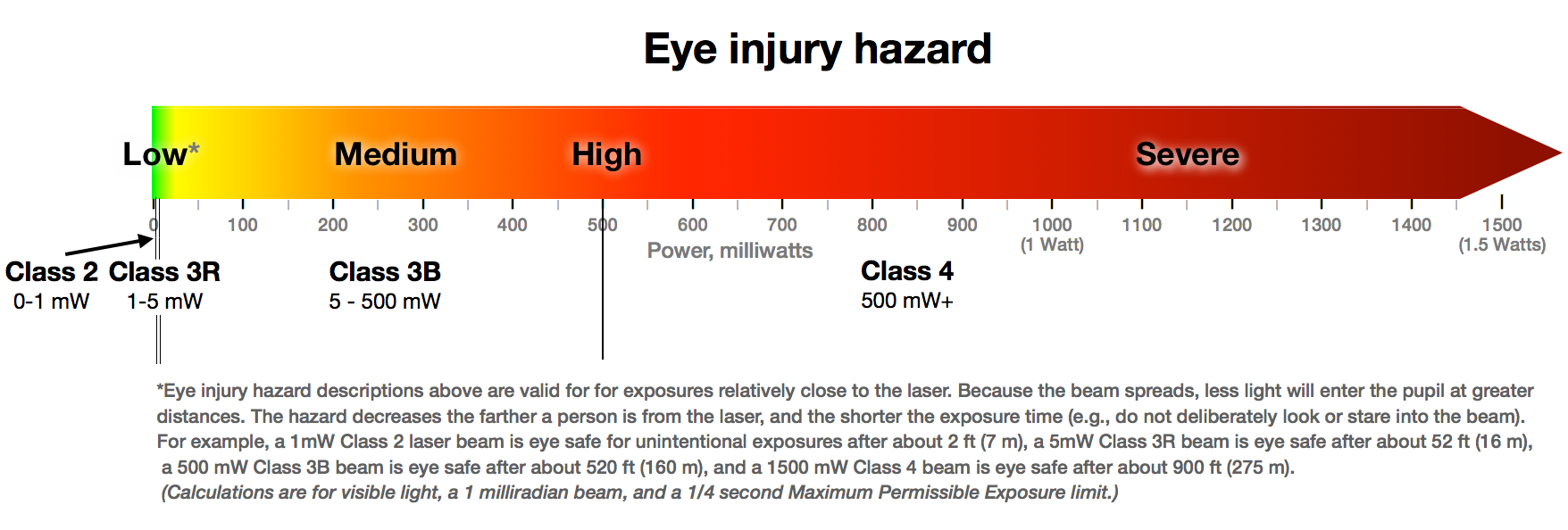
- [What is laser safety?]
- [What is IEC60825-1 Standard?]
- [Laser Class 1]
- [Laser Class 1M]
- [Laser Class 2]
- [Laser Class 2M]
- [Laser Class 3]
- [Laser Class 3R]
- [Laser Class 4]
What
is Laser Safety?
Since the first laser developed in 1964, this
light source have a power not only to do the required job, but also
demonstrates to be dangerous if operated improperly. Laser safety is the safe design, use
and implementation of lasers to minimize the risk of laser accidents,
especially eye injuries. Even relatively small amounts of laser light
can lead to permanent eye injuries, so the sales and usages of lasers
are all subject to government regulations. Laser
safety can be divided into Class 1, Class 1M, Class 2, Class 2M, Class
3R(3A), Class 3B, Class 4. In the USA. it is considered that Class
1 to Class 3R(3A) lasers are safe for consumers. In EU,
laser products are required to be Class 1, Class 2, Class 1M, Class
2M for consumers products. All, working with class 3B and class 4
lasers, must wear safety goggles, which are designed to absorb light of
a particular wavelength.IEC 60825-1 standard guides laser product developers to comply classification system. All laser products, certificated as class 2 or higher class, must provide the triangular warning label. Sometimes, other labels could be required to indicate laser emission, laser apertures, skin hazards, or invisible wavelengths. It depends on laser applications.
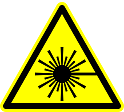
As professional laser module manufacturer, IADIY standard laser modules all fit eye safety requirements and support customers to apply for FDA accession number.
Classification:
IEC60825-1 Standard
The classification of a laser is based on the concept of accessible emission limits (AEL) that are defined for each laser class. This is usually a maximum power (in W) or energy (in J) that can be emitted in a specified wavelength range, exposure time that passes through a specified aperture at a specified distance. Main characteristics and requirements for the classification system, specified by the IEC 60825-1 standard, is listed.
Laser
Class 1 (Class I) (Output Power <0.39mW through Dia. 7mm
Aperture @10cm Distance)
CLASS 1 LASER PRODUCT
Class 1 laser is safe under all conditions of normal use. This means the maximum permissible exposure (MPE) cannot be exceeded when viewing a laser with the naked eye or with the aid of typical magnifying optics (e.g. telescope or microscope). To verify compliance, the standard specifies the aperture and distance corresponding to the naked eye. For example, a high-power laser with a very large beam or highly divergent beam may be classified as Class 1 if the power that passes through the apertures defined in the standard is less than the AEL for Class 1. Often, devices such as optical drives will be considered class 1 if they fully contain the beam of a more powerful laser, such that no light escapes under normal use.
Laser Class 1M (for Divergent Laser, Output Power <0.39mW through Dia. 7mm Aperture @10cm Distance)
LASER RADIATION
DO NOT VIEW DIRECTLY WITH OPTICAL INSTRUMENTS
CLASS 1M LASER PRODUCT
A Class 1M laser is safe for all conditions of use except when passed through magnifying optics such as microscopes and telescopes. Class 1M lasers produce large-diameterbeams, or beams that are divergent. The MPE for a Class 1M laser cannot normally be exceeded unless focusing or imaging optics are used to narrow the beam. A laser can be classifiedas Class 1M if the power that can pass through the pupil of the naked eye is less than the AEL for Class 1.
Laser Class 2 (Output Power <1mW)
LASER RADIATION
DO NOT STARE INTO BEAM
CLASS 2 LASER PRODUCT
A
Class 2 laser is considered to be safe but may cause eyes uncomfortable
if stare into laser light long time. Class-2 lasers are limited to
1 mW continuous wave, or more if the emission time is less than
0.25 seconds.
Laser Class 2M (for Divergent Laser, Output Power <1mW through Dia.7mm Aperture @10cm Distance)
LASER RADIATION
DO NOT STARE INTO BEAM OR VIEW
DIRECTLY WITH OPTICAL INSTRUMENTS
CLASS 2M LASER PRODUCT
A
Class 2M laser is safe because of the blink reflex if not viewed
through optical instruments. As with class 1M, this applies to
laser beams with a large diameter or large divergence, for which the
amount of light passing through the pupil cannot exceed the limits for
class 2.
Laser Class 3R(3A) (Output Power <5mW)
LASER RADIATION
AVOID DIRECT EYE EXPOSURE
CLASS 3R LASER PRODUCT
A
Class 3R laser is considered safe if handled carefully, with restricted
beam viewing. With a class 3R laser, the MPE can be exceeded, but
with a low risk of injury. Visible continuous lasers in Class 3R
are limited to 5mW. For other wavelengths and for pulsed lasers, other
limits apply.
Laser Class 3B (Output Power <0.5W)
LASER RADIATION
AVOID EXPOSURE TO BEAM
CLASS 3B LASER PRODUCT
A
Class 3B laser is hazardous if the eye is exposed directly, but diffuse
reflections such as those from paper or other matte surfaces are not
harmful. The AEL for continuous lasers in the wavelength range from
315 nm to far infrared is 0.5 W. For pulsed lasers between
400 and 700 nm, the limit is 30mJ. Class-3B lasers must be
equipped with a key switch and a safety interlock. Class 3B lasers
are used inside CD and DVD writers, although the writerunit itself is
class 1 because the laser light cannot leave the unit.
Laser Class 4
LASER RADIATION
AVOID EYE OR SKIN EXPOSURE TO
DIRECT OR SCATTERED RADIATION
CLASS 4 LASER PRODUCT
Class
4 is the highest and most dangerous class of laser, including all
lasers that exceed the Class 3B AEL. By definition, a class 4
laser can burn the skin, or cause devastating and permanent eye damage
as a result of direct, diffuse or indirect beam viewing. These lasers
may ignite combustible materials, and thus may represent a fire risk.
Class 4 lasers must be equipped with a key switch and a safety
interlock. Most industrial, scientific, military, and medical lasers
are in this category. Medical lasers can have divergent emissions and
require awareness of nominal ocular hazard distance (NOHD) and nominal
ocular hazard area (NOHA).
References
More laser safety introduction: https://en.wikipedia.org/wiki/Laser_safety
IEC60825-1 : 2014 official link: https://webstore.iec.ch/publication/3587
IEC60825-1edition1.2
reference: Download ![]()
FDA Accession number application:
Download ![]()
Custom Laser Modules: Diode Laser module, VCSEL Laser, Laser illumination, High Power Laser Head
Laser Modules Guideline introduces IADIY's laser module product line including RGB diode laser module, infrared laser module, line laser module, and customized diode laser module for convenient search and comparison by laser modules features list. You can open the laser modules guideline accordion to review the laser modules list and related laser diode module introduction and explanation.
More diode laser modules with different wavelengths and power options are available additionally to the standard laser diode module types. We also support the custom made laser modules as your requirements. Please send your requirements to us or leave the message in comment below. We'll reply to you soon!

IADIY provides standard laser modules that are convenient for quick and easy orders of samples or small quantities on our Online-store.
We also provide and welcome orders of custom made laser modules with any specification requirement. If you can not find the laser module that fits your application, please email your inquiries to sales@iadiy.com and briefly describe your requirements or applications to us. We will reply to you in a very short time (usually within two working days).
Laser Module Introduction
A "Laser Diode Module" usually comprises a laser diode, a driver circuit board, an optical lens (a laser collimator lens, a laser line generator or a laser pattern generating DOE (Diffractive Optical Element)) and mechanical parts. In high power laser modules, an additional TEC is also included for heat dissipation. The laser light emitting from the laser diode has a wide divergent span angle, therefore most applications require a laser collimator lens that will converge the laser light into a collimated laser beam. In the event of applications that would require a non collimated laser beam, IADIY also designs other complementary optical components to be assembled after the collimated laser beam, in order to achieve the desired pattern.
Another advantage of full laser diodes modules compared to single laser diodes is the presence of a specific driving circuit for the laser diode. Laser diodes are easily damaged components that need suitable working voltage and current supply in order to reach a stable output power, especially when considering the eye safety certifications.
Laser Diode Module Structure

- a laser diode
- an optical lens
- a laser driver circuit
- optical and mechanical properties
1. Laser diode:
-Main characteristics of laser diode: wavelength, output power, operating temperature
(Our laser diodes product list at https://www.iadiy.com/custom-laser-module, and other characteristics of laser diode like divergent angle, mode,and detsils please refer to the laser diode introduction. We can provide diode laser modules with wavelengths comprising 405nm, 450nm blue laser module, 520nm green laser module, 635nm, 650nm red laser module up to 1550nm infrared laser module and a laser module driving power can be equal or smaller than its laser diode operating power (as stated on the corresponding laser diode data-sheet).

2. Optical Lens: Collimating Lens + Other Function Lens (Laser Line Generator, Laser Pattern Generator, or Special Feature Function Optical Components)
The following are the basic optical specifications that we need to agree upon before starting any laser module production.
- Main characteristics for the beam collimation: divergence angle, laser spot size.
- Choice of the laser pattern: laser dot, laser line, laser cross line, or any kind of laser pattern achieved through using DOE (Diffractive Optical Elements).
Laser Collimating Lens, Laser Collimator Lens for Laser Collimation Beam
Usually the emitting laser light from the laser diode is divergent, and most applications need the laser beam as a straight light beam. Then it needs the collimating lens to focus the divergent laser light to a very small divergent angle we called laser collimation. The laser beam divergent angle, beam spot size, even laser line width or DOE laser pattern sharpness depend on the laser collimation performance. The collimating lens is the key for the collimated beam requirements. The collimating lenses selection you can refer to the Optical Lenses Store.
Laser Line Module / Laser Line Generator / Cross Line Laser Module properties:
The laser line module projects a span angle laser line pattern. The length of laser line depends on the span angle and the distance, longer as farther distance and bigger span angle. The standard span angle of IADIY line laser modules have 40°, 60°, 90°, 110° can be chosen. The standard line laser module series we only accept the different span angle customized no other special modifications. As the real applications most customers have the requirements for the laser line width, laser line central accuracy, laser line straight accuracy and the laser line power uniformity. Higher accuracy would cause much time for the line laser module alignment. Especial the requirement of laser power uniformity would consider using the different level laser line generator lens. If you have these requirements please take the reference of our high end line laser modules product line. And send your application and detail requirements to us. We’ll try to optimize your requirements to modify the line laser module as the most cost efficiency for your application.
-Main characteristics of line laser module: line laser span angle or the length, and laser line width, laser line straight (bend) accuracy at working distance, laser line power uniformity range, boresight requirements: central, tilt, rotation requirements.


※ For line lasers, specifications such as laser line width, laser line span angle, laser line uniformity, cross line center, mechanical requirements or original marking can be additionally modified.Our standard laser line module diameter is defined at 9mm but all dimensions can be adjusted according to your needs.
Laser Pattern Generator (DOE Laser Patterns)
You can check some of our available specific DOE laser patterns at our dedicated page for DOE: sales@iadiy.com

※ IADIY has the optical design capacity to design and create new optical components such as Laser Collimating Lens, Diffractive Optical Elements, etc.. according to your requirements. If you had any questions, please not hesitate to let us know.
3. Laser Driver Circuit:
The driving circuit of the laser modules can be either APC (Auto Power Control) or ACC (Auto Current Control). An APC driver controlled laser module will automatically adjust the input current in order to output a constant value of optical power. An ACC driver controlled laser module will in another way have a constant value of input current, while the output power may be a percentage variable by temperature change.

Apart from CW mode (continuous wave mode), our laser modules can be designed to input a TTL modulation if needed. It can be fixed to run at a certain frequency (Hz) or a specific duty cycle, or can it be alternated via an external PWM input. Most applications major concern the laser power for eye safety or laser sensing. It needs to consider a stable output laser power or to adjust the power for the application requirement. Usually we'll suggest the APC driving circuit for this kind application. Or you may need to add an external photo diode monitoring the power for the control. Because the laser diode emitting efficiency would vary as the temperature, environment and life time. You need to monitor the real output power just can keep it stable as you need. The driving current only for the reference can not exactly equal to the laser output power.
-Main characteristics of laser driver circuit: operating voltage range, CW or Pulse modulation mode (TTL/PWM signal control: frequency range), driving current requirements, APC or ACC mode, laser module safety or circuit protection requirements.
Laser Output Power
A laser output power can be measured with a Power meter. Lasers can work in CW mode (continuous mode) or in a pulsed mode. Pulses power can be accounted on the basis of their average power or on the peak power of each pulse. Average lasers power ranges from <1mW for laser pointers and other consumer products to several kW for laser cutting applications or laser weapon systems, etc.
In laser applications the laser power control is an important feature, which is why the laser modules usually need specific driving circuits. Also, the laser diodes output power is sensitive to the environment temperature. We usually regulate the laser modules through an APC control method (Automatic Power Control) for <5mW applications and for eye safety certification. Such circuit requires one photodiode to measure the laser output power and feedback it to the driver and adjust the current so as to achieve a stable output power range. Applications with pulse modulation can also be controlled in a stable average output power thanks to the photodiode feedback.
Another laser driver type uses the ACC control method (Automatic Current Control) which is used in higher power laser modules (>10mW) for applications that can bear larger power variation, but that may not suitable for eye safety certification.
IADIY also supplies laser modules with variable output power, which can be achieved through digital modulation or analog modulation control. Custom made design can also be prepared according to your requirements, don't hesitate to contact us at: sales@iadiy.com
4. Optical and mechanical properties:
The laser module casings can be designed into many shapes and with different materials, their surfaces can be treated for different operating environments like anodization for electrical isolation etc. Some differences in a laser module casing design might help to reach different operating temperatures as the heat sink to offer the best protection for the inner components. And there are some optical features are deigned and aligned by the mechanic structure like focal distance, boresight (coaxial tolerance), laser line features will increase the mechanical dimension size and complexities.
-Main characteristics for mechanical requirements: dimension requirements, boresight or called coaxial angel accuracy of laser module.


